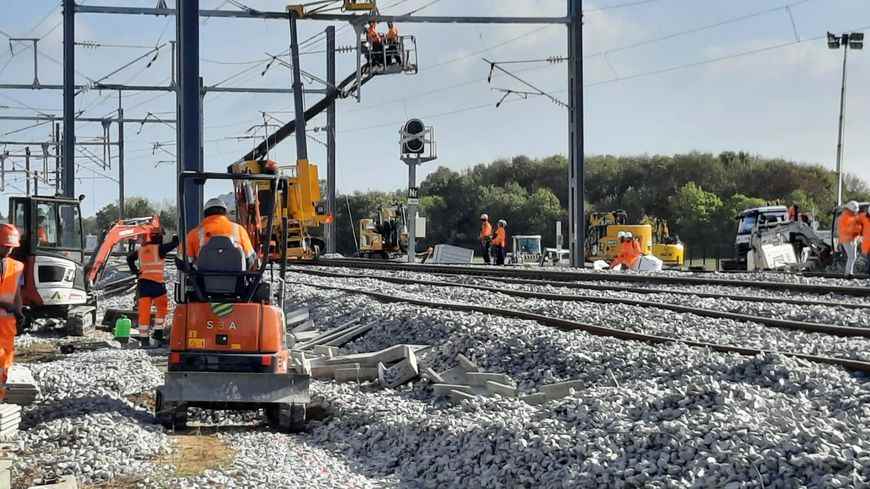TGVs launched at 160 km/h through the Donges refinery, around sixty trains every day right in the middle of a high Seveso site: it’s over! Work to bypass the industrial site, which began 2 years ago, is nearing completion. The new line that connects Nantes to St Nazaire will be ready for October 7th. The final sprint therefore for the SNCF, which had to interrupt all train traffic for 14 days between Le Croisic and Savenay while connecting the new tracks to the network, installing catenaries, signage and carrying out the necessary tests.
– Helen Roussel

– Helen Roussel
First train departing from Nantes on Friday October 7 at 5:34 p.m.
4.5 km of railway track have been laid and connected to the existing network. The old rails have been removed, they will be resold to other railway yards such as in Aquitaine, but some remain in place. 2 km of rail that will only be used by TotalEnergies for its freight. To keep the timing, the SNCF over these 14 days puts the turbo. 500 workers work in 3/8 day and night, a hundred companies are mobilized. “The very first train will leave Nantes on Friday October 7 at 5:34 p.m. and will arrive here in Donges at 5:59 p.m.” explains Audrey Delaunay, SNCF Network Operations Manager.

– Helen Roussel

– Helen Roussel
Divide the risks by 10″ – Meven Bouvet, SNCF
The project in the long term will divide the risks by 10 since the trains now bypass industrial sites. But it was also necessary to restore roads and create more 6 km of roads with bridges and roundabouts. We also had to move theat the Donges stop which was still in the refinery. It is still on a Seveso site but less high. “It’s certainly less dangerous, but to reduce the risks, it’s unique in France, this stop has no glass or plexiglass on the shelters” says Meven Bouvet, director of the SNCF network project.

– Helen Roussel
A colossal construction site, “we are on time” blows Audrey Delaunay, who will have cost 150 million euros financed by the State, local authorities and TotalEnergies.

– Helen Roussel
